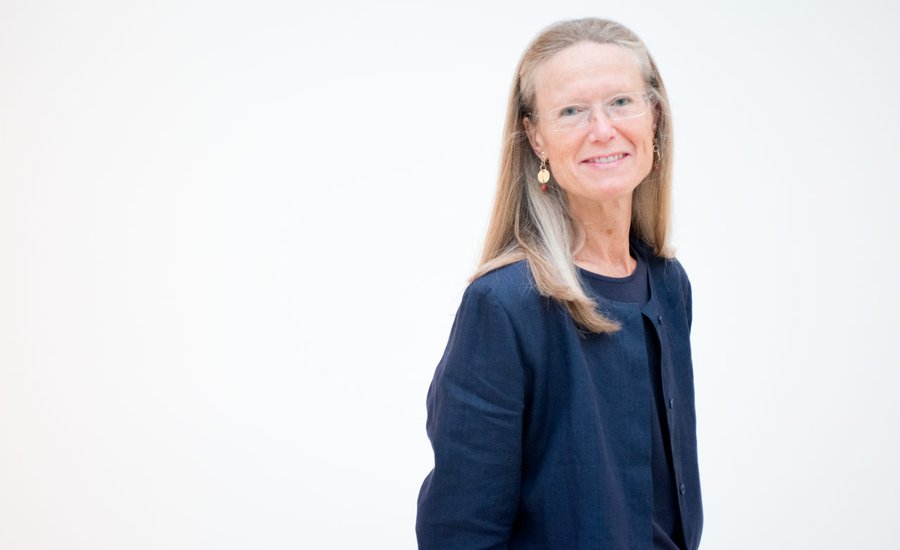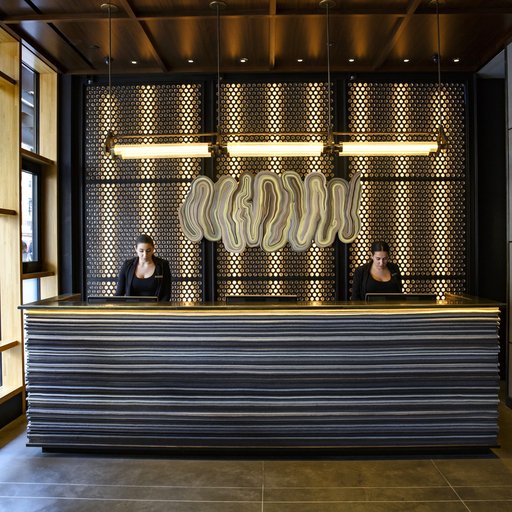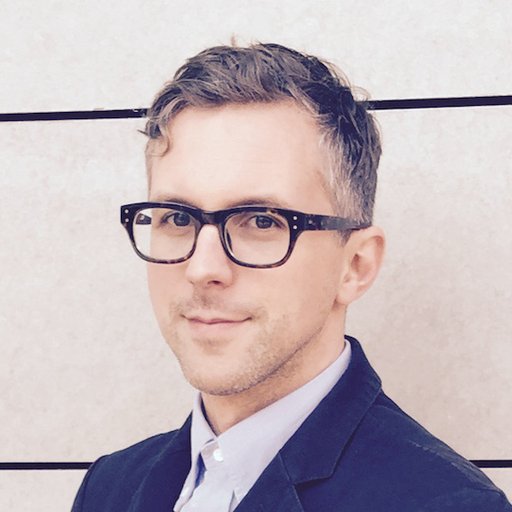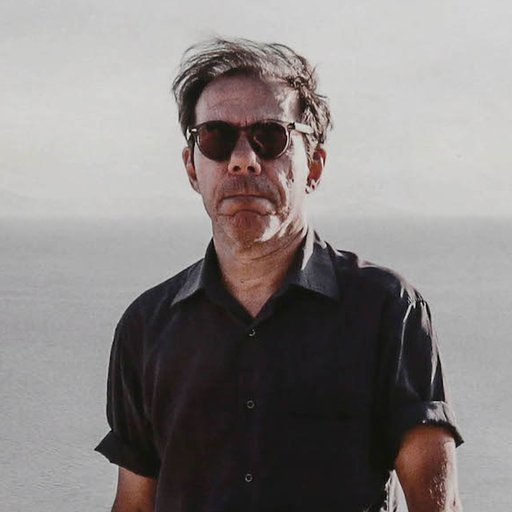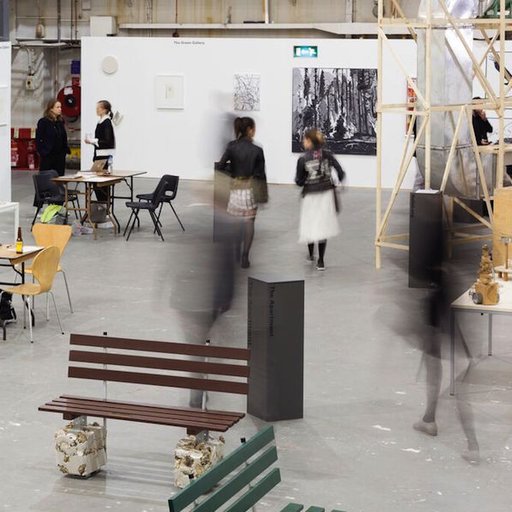August in stature, colossal in scope, the Metropolitan Museum of Art is one of the wonders of the museological world – a lumbering titan that carries the history of human culture on its shoulders. As such, it has long been allowed to move at a slower pace, allowing smaller, fleeter museums to compete in the fast-paced contemporary arena and patiently waiting to acquire newer art when it comes willingly into its embrace—as, eventually, a century after its manufacture, the preeminent Cubism collection amassed by Leonard Lauder entered the collection last year.
But times have changed, and as contemporary art has become the biggest draw in the game, commanding headlines and building new audiences far beyond the traditional museum viewership, the Met has felt pressure to become more engaged in the hot art of its time while holding true to the imperatives of its venerable encyclopedic collection. (In other words, no Björk.)
Enter Sheena Wagstaff, and the new Met Breuer. Recruited from Tate Modern four years ago to vivify the Met’s Modern and contemporary collection, Wagstaff has been on a hiring tear; her staff currently numbers 10, a veritable army inside the nonprofit institution. With her team, she has been working with the architect David Chipperfield to yank the collection’s home in the Lila Acheson Wallace Wing out of the 1980s (when artists like Chuck Close and Julian Schnabel ruled the roost, as can still be seen in the installation) and into the simultaneously more minimal and more frenetic now.
Leased for eight years as a joint holding station and laboratory for Wagstaff ’s department while this transformation takes place, the Whitney Museum of American Art’s former Marcel Breuer-designed building on Madison Avenue is now debuting as a place for the Met to try out new approaches to the contemporary—and to find new ways to mix it in with its older treasures in a way that invigorates both.
As the matchmaker for this May-December romance, Wagstaff has a dizzying mix of challenges and opportunities. Can she use the buzz of the contemporary to make art-historical relics cool? Can the juxtaposition of these elements shed new light on the role of art in our lives? Most importantly, will the union result in the crackling chemistry that can bring in droves of viewers. To find out her vision for the Met Breuer, and for her department more generally, Artspace editor-in-chief Andrew M. Goldstein spoke to Wagstaff about what to expect to see next.
With the world’s eyes on the Met Breuer, you have chosen to debut with “Unfinished” as the main event, a survey of partially completed art from the Renaissance to the present moment. Can you describe the thinking behind the genesis of the show, which was originally suggested by your former colleague Nicholas Cullinan, and explain why it seemed apt to inaugurate this new site?
The fact is that the Met has always embraced contemporary artistic practice to one degree or another, although the degree of this engagement has varied over time. And while the actual idea for the show came from Cy Twombly, the artist, who then mentioned it to Nick Cullinan, it’s an idea that’s been around. So it’s not the first exhibition devoted to the idea of “unfinished”—as in non finito, or deliberately unfinished—but it is the first of its scope. Why, then, did we choose this as the opening show? My role here at the Met is to reinvigorate the position of Modern and contemporary art in its relation to history, but simultaneously the need to make older art seem urgently relevant is absolutely part of my thinking. This is a two-way process.
There is a phrase that is very often used, which is “looking at history through a lens.” Everyone uses this photographic simile, which is bizarre to me, but anyway I want to look at history through the very human lens of Modern and contemporary art. So, yes, it is important to look at history from the present, but simultaneously it’s important to have this two-way conversation that comes from history to the present—and not in terms of a trajectory or continuation of styles in the sense of a relentless “progress,” which is a notion that in any event has been undermined for many years now, but in terms of telescoping both back to the past and forward to the future. I think this is very crucial, and the key ingredient in the mix is the artists themselves.
Coming from Tate Modern, where working with living artists was hugely important to every aspect of the way that one runs a museum of Modern and contemporary art, I came to the Met and was surprised to realize that, actually, artists are using this institution the whole time as well. This will be obvious to anyone who comes here on the weekends, or maybe in the evenings on Friday and Saturday: artists are constantly roaming into very different types of galleries, investigating areas of interest for them.
This is something we have uncovered a bit in “The Artist Project,” the online series I began doing last year to allow contemporary artists to talk about their favorite pieces in the Met’s collection, and some of those are actually really revealing. In fact, about a year and a half ago we worked with the artist James Nares, who came in and did a project with my colleagues in the photograph department where he selected works from the collection that were very meaningful to him and which he had gotten to know over years and years. He talked about the fact that the Met was necessary to his work, that he came here all the time to refuel and to be inspired.
Kerry James Marshall also said the same thing, in so many words, when I met him not so long ago to see an amazing masterwork by him that we’re showing after “Unfinished,” when we’re doing a mid-career survey of his work in partnership with MCA Chicago and L.A. MOCA. Alongside that show at the Met Breuer, Kerry is also doing a selection of work from the Met’s collection that has the same meaning for him as James’s did—but with a big difference.
If you’re familiar with Kerry’s work, you know that he did an early series of paintings related to housing projects, which were premised on very utopian ideas of rehousing disenfranchised parts of the population, notably African Americans, but then didn’t actually follow through with any of the necessary support structures or proper funding and so went into disrepair and suffered the same social issues as the places where the families had come from. Well, when he was making that series, he drew inspiration—in an extraordinary juxtaposition—from the Rococo paintings of Fragonard and Boucher that he spent a lot of time with in the Frick collection.
After that series, he had a plateauing of his work. He stopped. He had to take a breath. He wasn’t sure in which direction to go next. And then he came to the Met, as he did many times, and he was wandering through the 19th-century galleries when he came across the Ingres Odalisque, which is a grisaille odalisque, so when it sits there on the wall it evokes photography even though it’s from before the time of photography. For Kerry this was a Damascene moment, where he then decided that he was going to deal with the color black in his painting in a very different kind of way. It set him off again. So, that work will be a part of the installation as a very special touch point for him, because it relates to the history of robust painting, of which he sees himself as very much on the vanguard.
When artists go to museums like the Met, it seems they’re often looking for things that they can use—that it’s very much a foraging impulse. Speaking of Kerry James Marshall, I’m reminded of his extraordinary barber-shop scene School of Beauty, School of Culture where he reaches back to the distorted floating skull in Hans Holbein’s The Ambassadors, as if to harness this piece of ancient painterly technology. But if artists go through the Met foraging ingredients for their own artistic practice, what is the correlation to the way that you hope a lay viewer will begin to approach the work on view? Is there a moral dimension, perhaps something of use that the viewer can find in the art when it’s presented in an non-chronological fashion?
Well, I don’t think “foraging” is necessarily the right word. I think most artists come here with something very specific in mind—usually a problem they’re trying to solve, or because they’re trying to detect clues to a new direction in whatever medium they’re working in—so it’s not a random foraging, but a much more directional approach, even if they don’t know what they’re looking for.
But, as a curator, the way I would answer is to say that that, in an encyclopedic museum like the Met, you have this fantastic, deep, enormous resource not only of art-historical knowledge but cultural knowledge, which goes back to the beginning of time—literally, to when human beings were making marks on cave walls. When you put these things together, there’s already a conversation that’s inherent between each of the works, regardless of their medium or craft.
One of the things I love about working in an encyclopedic museum is that we are in the business of rejuvenating this conversation in the present, in the life you and I are living right now on the Upper East Side. My department, so far anyway, covers 116 years of art; the museum covers 5,000 years of art, and moving through an environment like that you always have these moments of recognition.
This is especially important today. Right now we have these global conversations through digital means, and we all collectively feel that we’re living in a very special moment—that everything has led to this point. It’s standard, that’s human. But, actually, we’re just a tiny blip along the continuum. It’s huge—a much, much longer trajectory. And so while you might imagine that maybe an ancient Egyptian sculpture of a scribe sitting cross-legged on the ground, about to make the first mark on a tablet, would have very little to do with our lives today, when you bring it up to the present moment by juxtaposing it with someone like Nasreen Mohamedi—whose work is literally about demonstrating the struggle, trauma, and yet ultimate triumph that is the very essence of mark-making—what you get is a compression of time.
Why I love working in an encyclopedic museum is not just because it can demonstrate this kind of compression of time—it also makes one realize quite where one sits in the continuum of humanity, outside of art. In the context of the Met you have all of these different forms of artistic and cultural expression—you have bronzes made in China well before the official Great Bronze Age there next to extraordinary Benin bronzes and then of course the bronzes of 20th-century artists like de Kooning up until the present, with Rebecca Warren and other artists. I don’t see time as this big dichotomy, with a void between history and the present. History and art have a natural companionship—they’ve always been together. We have this huge potential in the Breuer building to try and make some of these affinities come to light.
That’s one of the reasons why “Unfinished” was chosen as our first show. It’s such a fundamental question for any artist—any artist you ask, without exception, has this issue: At what point is it finished? When do I feel it’s done? I was just at Ellsworth Kelly’s memorial service on Sunday, and I was talking to Joel Shapiro—there were many artists there—about the show, and he said, “You’re absolutely right. It doesn’t get any easier over time. You still have this moment where you just think, ‘Do I go on, or do I stop?’”
Cecily Brown is another artist who is very sensitive to this issue, and she recently told me how at one point she went beyond that point of “finishedness” with a painting, whatever that means, and immediately knew that she had gone too far. She hangs that painting on the wall of her studio as a talisman, in a way.
So, it’s a crucial issue, and it’s an issue that has not changed over time—it’s a question that remains as pertinent as it was to the painters of the Renaissance, where we start the show, and that’s really where the issue arose.
In this context, it’s interesting to note that many artists are collectors themselves, and choose to live with older art as a sort of touchstone. For instance, Jeff Koons, an icon of everything extreme about the contemporary-art moment, has an amazing group of works by artists like Quentin Matsys, Fragonard, Magritte, and Courbet.
I happen to know that there are many artists of my generation who have been quietly collecting work from other times in art history—although, admittedly, these are artists who can afford to buy at auction or from other places, which not every artist has the means to do—and have brought together works not because they want to sit in an armchair with a cigar and chortle over having got something on their wall, but because they actively look at them on a daily basis and, I think, register and re-register some of the artists whose accomplishments they revere. That might be Jasper Johns looking back at one of Cézanne’s Bathers, or Sol LeWitt, who had a big collection of his contemporaries as well as art going back into the 19th century.
When Turner died he left a number of unfinished canvases in his studio and there was an auction afterwards and a number of those canvases were bought up by his peer artists—not because they had these wonderful collections, but because they wanted to actually hang one of his genuinely unfinished works on their walls to work out how he rendered light through paint. It was like stealing the code, in a way. And we have those in “Unfinished.”
As a curator, you occupy an unusual position: as the head of the Modern and contemporary department at one of the world’s preeminent historical institutions, at a time in which the balance of the public interest has tilted to an unprecedented focus on contemporary art—a time in when, within the art world, artists become famous and are then discarded within the blink of the eye, like mobile gaming apps. Is there something you hope to communicate, through your programming, to this viewership that has become so besotted with the contemporary?
I don’t feel what I’m doing is as tactical as that. I’m not proselytizing, but it is true, as I said before, that artists look backwards over their shoulders, and always have. Partly it’s the anxiety of influence, but partly it’s also due to the fact that if you feel that you, as an artist, have something to contribute to a cultural story, you need to know where you sit within that story. You’re trying to create a different mode of expression that speaks to the time of your life and what you find around you, but at the same time takes its cue and learns from those who have come before. There is no purely new invention.
One thing you’re talking about, however, that is much, much more strongly market-inflected than it has ever been, is the breakthrough of relatively young artists onto the scene. Again, that is not something that is new—when you look back to some of the artists we know well, like Jean-Michel Basquiat, or Leonardo, frankly, they were incredibly young when they came onto the scene. But maybe the volume of these has increased, and I think that the market does inflect it in a different kind of way.
As the art market has expanded, so has the connected nature of contemporary art, with artists in far-flung countries finding themselves in continual dialogue through art fairs and biennials. By unveiling the Met Breuer with a show of Nasreen Mohamedi alongside “Unfinished,” you seem to be sending a clear signal that the site will be global in scope. How do you see these regions like India and Pakistan, that are less familiar to New York audiences, fitting into your program?
One thing that I’m trying to do at the Met Breuer is to really broaden the worldview of the contemporary art conversation, which is an opportunity that the riches of the existing encyclopedic collection at the Metropolitan Museum of Art offers. I have 10 curators in the Modern and contemporary department, including new architecture and design positions, and I have brought in several regional specialists as well for a number of reasons. One is that they reflect the rich repository we already have through the Islamic Department, through the Ancient Near East and Egyptian collections, and also the Asian and Islamic collections, which cross over in South Asia, with India and Pakistan and Bangladesh being part of that very important South Asian axis.
These are areas of the world that have particularly interesting new artistic practices happening
now, whether it’s reflected in the three-year-old Kochi-Muziris Biennale or the India Art Fair that just happened in Delhi, which has also been going on for a couple of years and has become an artistic nexus, much more than just a fair. There are many artists working and living in different cities throughout India right now, and there is so much interesting work coming out now: film, photography, painting, sculpture, you name it. There’s no general characteristic. There’s just some really exciting stuff happening. Ditto in the Middle East, but with completely different kinds of material—and also dealing with some pretty awful life circumstances. I was talking to a Syrian artist just before the war began, and many of those artists, if they’ve been able to leave, have left, and they’re still trying to resettle and make a new life for themselves elsewhere.
This is the reason why I brought these new specialists in, because they can help us tell stories that are both regional and international, embodied in one group or a number of groups of works by these artists. And it becomes even more poignant, of course, when you have the melting-pot population that we do in New York. I was talking to someone yesterday and thinking about all of the artists who were not born in the U.S.A. but who live and work here, in Brooklyn mainly but in Manhattan, too, and Queens. There are masses of artists from all over the world, from Western Europe, from Eastern Europe, of Afro-Caribbean origin, from the Middle East, from India—some of whom have been living here since the ‘60s and ‘70s. It is astonishing. New York is a global center in many, many ways. That’s another important responsibility I think that the Met has to represent. It’s not just about what lies over the seas—it’s about what is here, right on our doorstep.
You were talking about the Met Breuer as being a “lens,” but it seems that another analogy for the museum could be a portal, because it sounds like one will be able to walk into the building and be beamed into these other cultures and historical epochs. Considering that “Unfinished” is only the first show to express this approach, can we expect future shows to tackle other large themes in this almost biennial fashion? Are there any that are percolating?
There are, actually. There’s one percolating for next year, which includes seven departments at
the moment. Many of my colleagues, as any good curator would, have running lists of exhibition ideas percolating at any given time, and some of them survive and some of them don’t. I can’t really give you chapter and verse on this, but the format of a show like “Unfinished” that covers a broad span of art and history will be a feature of the program going forward. It won’t be rigorous, but it will be a very central core of our programming— the spine of programming in many respects. These shows will also be accompanied throughout by exhibitions of artists like Kerry James Marshall and other American artists, Western European artists, as well as artists from across the world, depending on how they fit within the larger framework of the Met’s overall program.
One thing to emphasize is that while there is a great deal of scrutiny and attention being paid to the Met Breuer—and rightly so, because it’s an amazing building, and we have an unprecedented opportunity, really, for any museum—at the same time, this is not a satellite. This is very much a part, or extension, of the mothership, where we’re expanding the program of the main Met into the Met Breuer, taking advantage of these very different kinds of spaces that we can work with.
And I have to say, personally, that there is something absolutely fantastic about working with the spaces that Breuer designed. They are beautifully proportioned, and every single one of those levels is different, with different scales and dimensions, and each of them works on its own terms. They are smaller than the average exhibition suite, but they’re not constraining, and in many respects they’re in fact liberating, because they require the curators and artists to think differently about the way space is used. They’re not homogenous spaces at all—they have a character, but they’re not overbearing.
Now, the Met is a great museum at the center of a cosmopolitan city and, as a result, receives millions of visitors every year. In this modern world, however, it’s being competed with on all sides by different virtual experiences – including the Google Art Project, where you can visit art institutions around the world from the comfort of your laptop, and, more basically, Google Image Search. As a two-pronged question, how do you make sure that the embodied experience of visiting a museum like the Met Breuer is an irreplaceable necessity, and then, on the other hand, how do you use the museum’s programing to cater to the people around the world who can’t actually enjoy the in-person experience?
What you’re outlining is a problem for all museums, whatever their status or the chronology that they cover—how to navigate the perceived dichotomy between the object and the virtual? I would say that one answer is demonstrated by the fact that people vote with their feet, which is to say from looking at the attendance numbers that there’s this demonstrable hunger for a lived experience— for a real-life experience rather than a virtual experience. The object as a manifestation of human creativity is something that defines the museum, and will continue to do so. I have no doubt about that.
But, yes, there is a different dimension—or actually a number of different dimensions—now. I think there is no substitution for the real direct encounter with an object, but the number of hits on our various websites and the number of our followers on social media testify to the fact that people are intensely interested in what the Met is doing, and are eager to see how far they can get into understanding and seeing the collection online. On our website we have a timeline of art history that is immensely popular, which is astonishing.
The “Artist Project” is finally becoming much more viral now, and I think these kinds of projects are just an additional enhancement that we have to offer at the Met. Also, we’re becoming incredibly good at translating our existing content onto the web and making it freely available, as in the case of all of our out-of-print catalogues, which we are putting onto some sort of platform that will be accessible to everyone—you don’t have to buy the catalogue, you’ve got the catalogue right there, with all this great scholarship, to use at will.
Museums have gone beyond their role as containers of objects—they have become ever more important centers of civic responsibility. And by “civic,” I don’t just mean when it comes to the city, but also the democratization of culture generally, where a belief in the ideals of democracy is very much a part of the conversation. To have a museum that represents a city but that also stands—through its incredible collections drawn from different parts of the world, and also through its very existence— for something that is open to all is a beacon for people from all parts of the world.
So, the museum has a number of different functions, and of course the display and conservation of objects is one very important one, but the other is to grant us a moment of awareness about where we stand in the great trajectory of time, and also where we stand in relation to the world now. I believe that an encyclopedic museum is the preeminent museum to make that clear, and, if people have their ears and eyes open, that is what they will encounter when they come to the Met.











